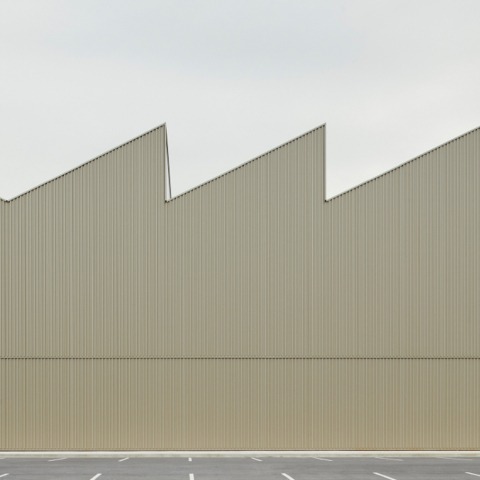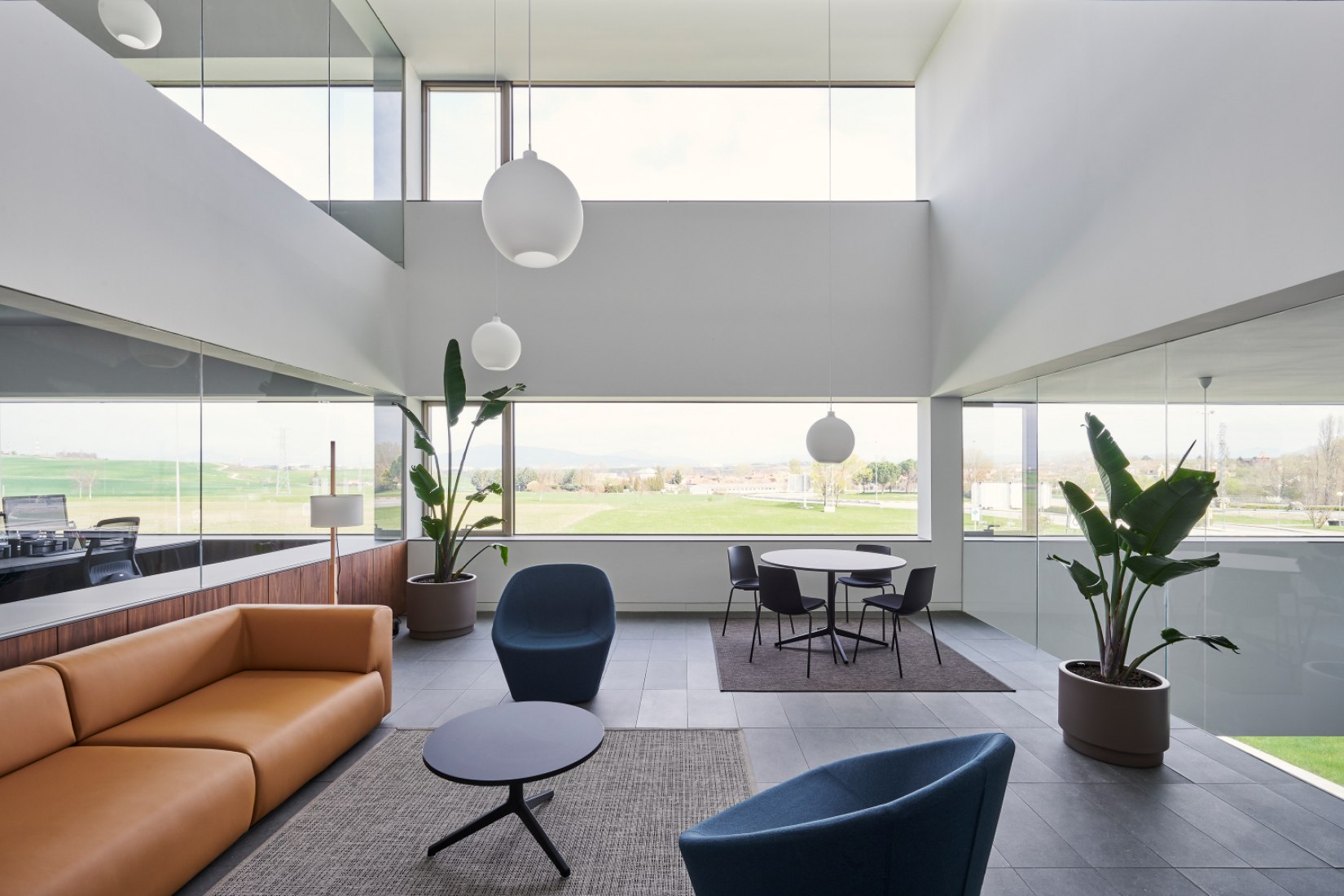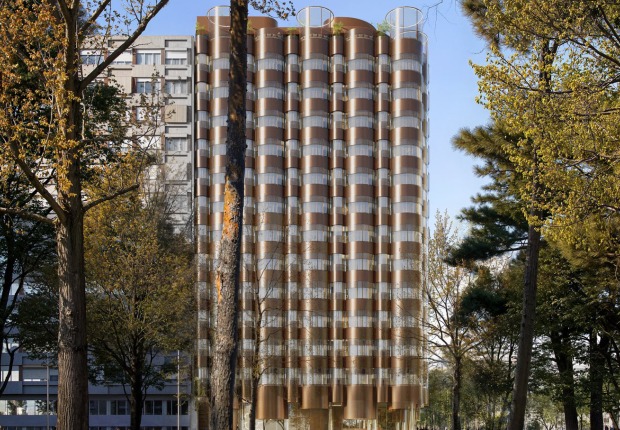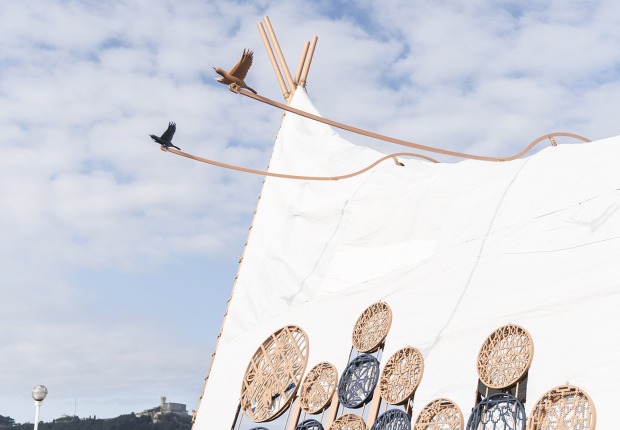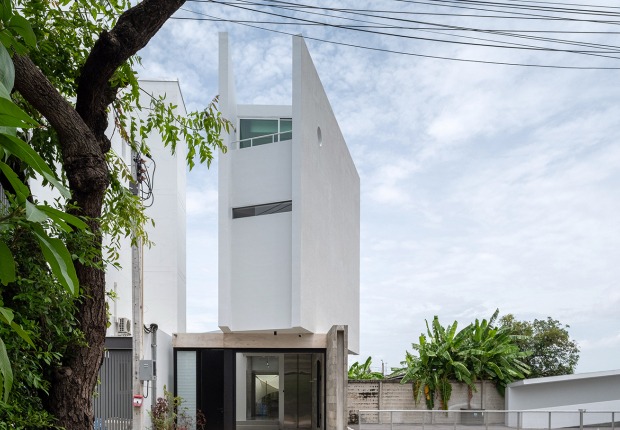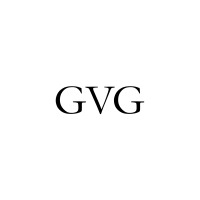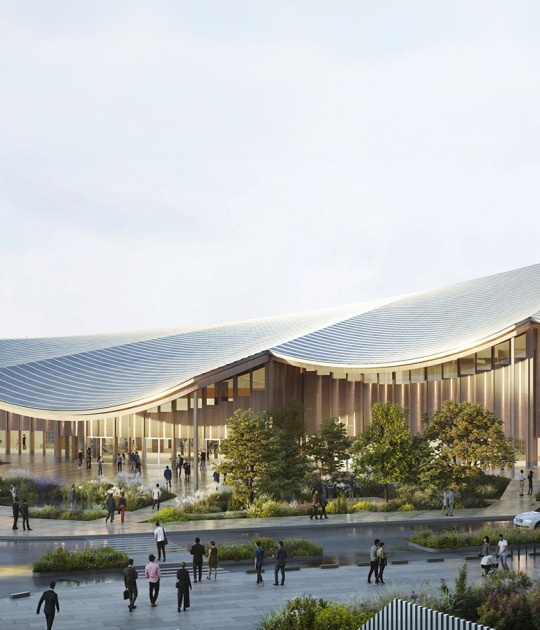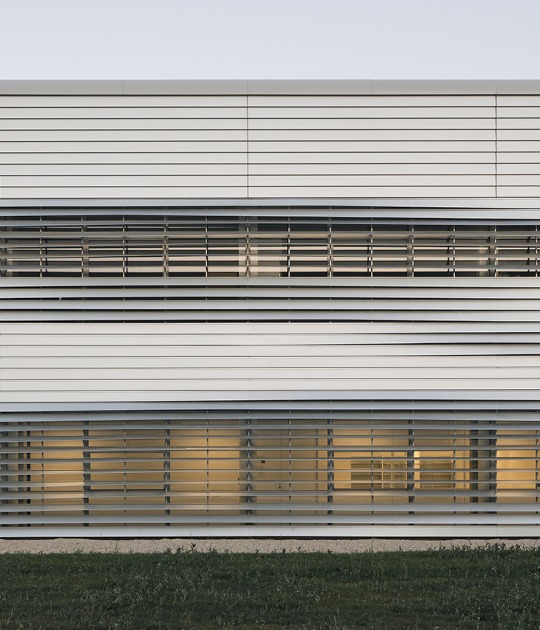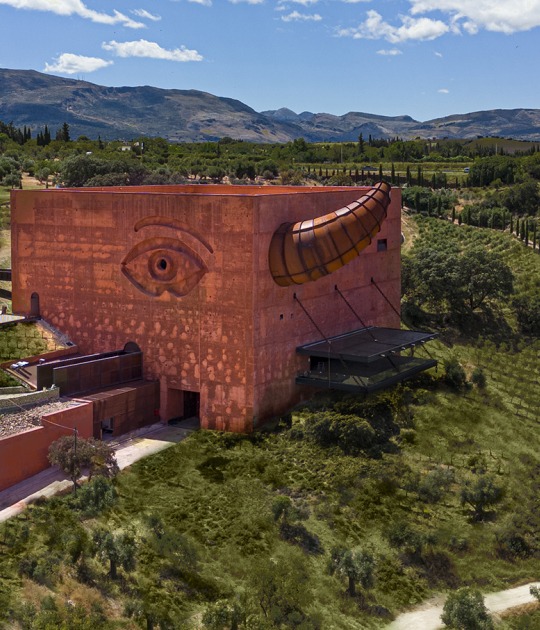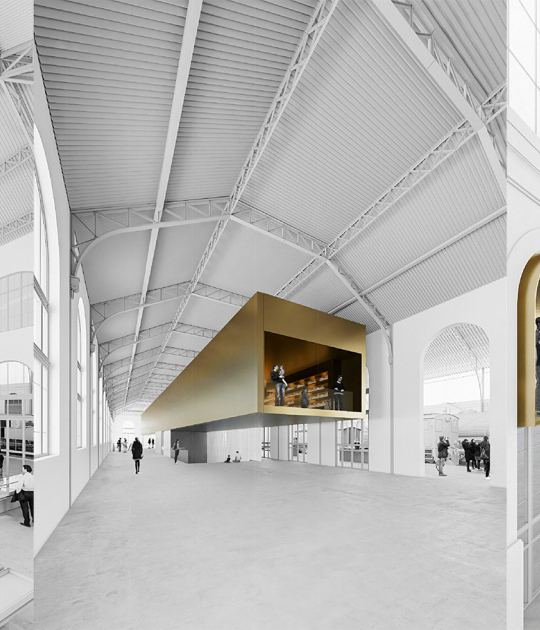Regarding the main façade, the building has a typical industrial finish of corrugated sheet metal, with long rows of windows that illuminate the interior of the offices, both outside and inside, a neutral colour palette predominates.
Description of project by Íñigo Beguiristáin and GVG Estudio
Atecna is a company specialized in document management, founded in Pamplona 20 years ago. Its main aim is to help businesses increase their efficiency and improve their decision-making processes through better management of their documentation and data. It started its life as a traditional file custodian but has evolved over the past two decades into a provider of fully digitised document management and process automation services. Its rapid growth made it necessary to bring together in a single location all the warehouses and offices, which until now were scattered throughout the region.
The program is complex, since it includes various departments with specific needs and different levels of relationships between them and, in turn, between these and the custody unit. Beyond the necessary proximity between the warehouse or archive and the administrative area, the premise was to avoid the traditional dissociation and to ensure a homogeneous treatment of the only resulting volume. In addition to conveying a clear and immediate image, this line of work made it possible to take advantage of the large size of the building to enhance the ambitious image of the administrative façade.
The two orientation options offered by a corner site were immediately opted for as a result of the obvious benefits of the incoming north light to illuminate both the workspaces and the warehouse. It is known that the sawtooth section is ideal to meet this requirement, and that the steel structure is the one that best meets the construction requirements of this characteristic profile. This silhouette and its inevitable evocation of the prototypical factory section, as evidenced by traffic signs or children’s stories, reinforce the forcefulness of the image. On the other hand, the technological lightness conferred by the steel to this broken outline is perfectly suited to the aspirations of an agile, dynamic and aggressive company.
In addition, the repeated succession of gable, as well as their ideal orientation and inclination, offer the perfect support for the almost obligatory solar panels, which occupy most of the roof surface.
Common sense and means economy encouraged subjecting the planimetry of the building to a rigorous orthogonal pattern. Modulation also extends to elevations. The only concession occurs in one of the vertices of a substantially square floor. This accident is justified for several reasons. In a plot that is characterized by its pronounced corner condition, not only of the block, but also of the entire industrial estate, it is necessary to attend to the convenience of taking advantage of this privileged exposure to gain visibility. On the other hand, the property's requirement to have a generous terrace oriented at noon, in a building that turns its back to the sun, made it necessary to sensibly manipulate the volume at this point. Finally, the coincidence of the gesture with the position of the only entrance to the warehouse, invites us to signify this access in consonance with the monumentality provided by its scale.
The translation of the oblique geometries, from the section and the lateral elevation to the ground plan, allows to effectively solve all these requirements. The same diagonal, taken to the offices, suggests a staggered section that enriches the perception of space, emphasizes transparency and dissociates hierarchies. In the same way, incorporating the sawtooth of the front wall into the main façade, far from being a casual or arbitrary gesture, allows the sequence to be crowned with a timely entry of light.
A crown also replaces the logo and corporate image of the company. It is made up of the last three teeth of the elevation, with the last one inverted, highlighting the fortunate symbiosis that exists between architecture and client.
